Which two network actions occur within the data plane? (Choose two.)
CD
What are network endpoints?
B
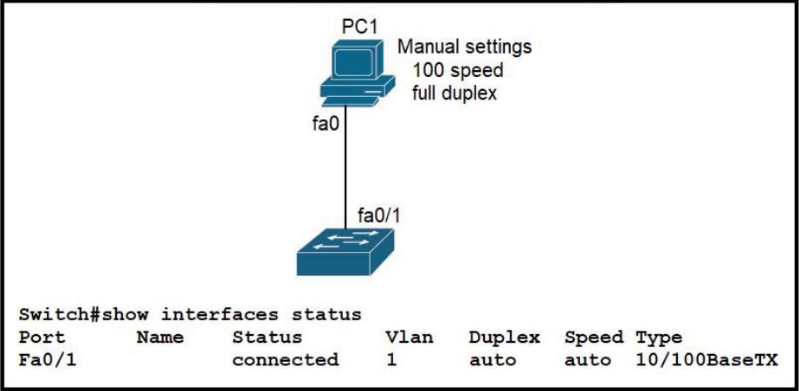
Refer to the exhibit. The link between PC1 and the switch is up, but it is performing poorly. Which interface condition is causing the performance problem?
B
Why was the RFC 1918 address space defined?
A
DRAG DROP -
Drag and drop the TCP or UDP details from the left onto their corresponding protocols on the right.
Select and Place: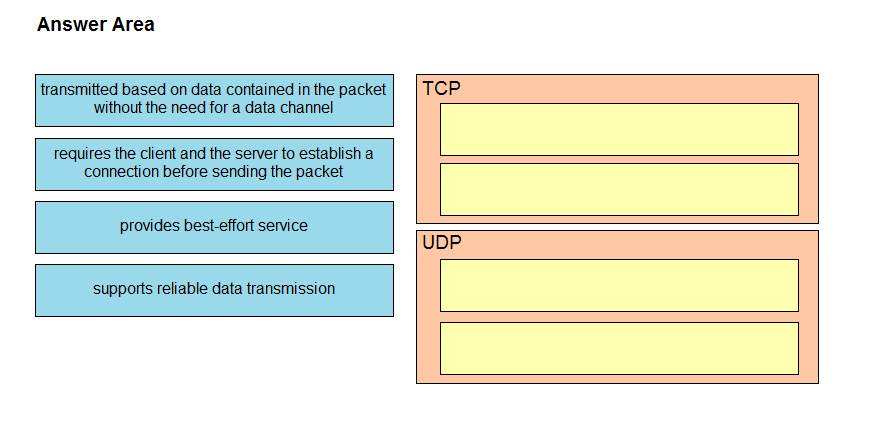
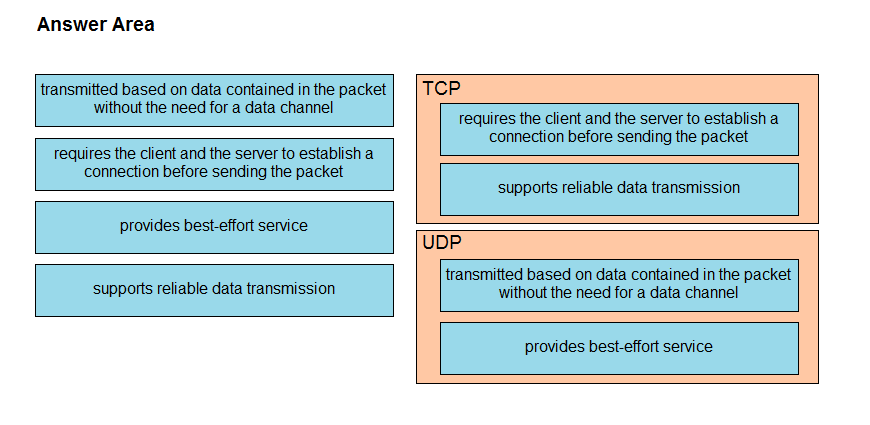
DRAG DROP -
Drag and drop the IPv6 addresses from the left onto the corresponding address types on the right.
Select and Place: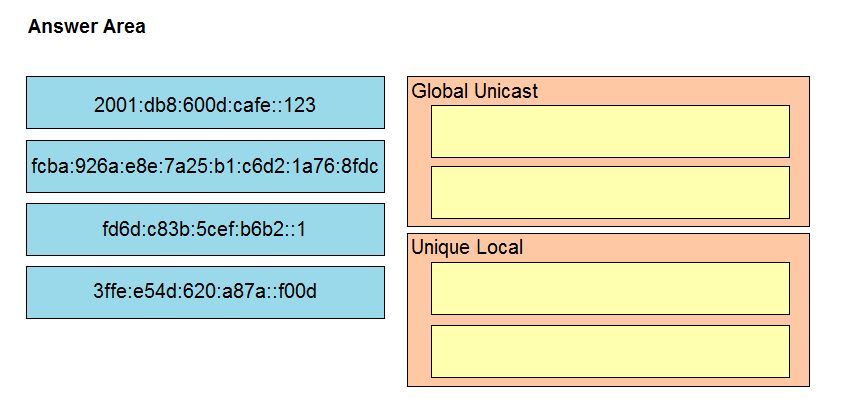
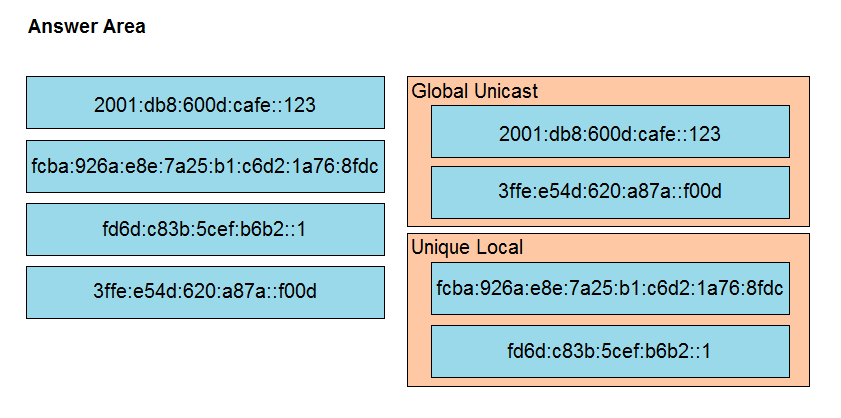
Reference:
https://learningnetwork.cisco.com/s/question/0D53i00000Kt6kl/ipv6-unique-local-addresses
Which type of organization should use a collapsed-core architecture?
A
It is ideal for small companies: The collapsed core model is a reduced version of the three-tier model. The deduction was made to create a network for small and medium-sized campuses. Therefore, smaller institutions can get the advantage of using a collapsed core network while still gaining the same benefits they would if they were using a three-tier model. Small organizations often cannot afford the hardware and human resources to run the network can benefit greatly with less oversight necessary.
And reduces cost: In a traditional three-tier campus network, the core layer is typically a complex and expensive piece of hardware. This layer is eliminated with collapsed core architecture, reducing both cost and complexity.
A network administrator is setting up a new IPv6 network using the 64-bit address 2001:0EB8:00C1:2200:0001:0000:0000:0331/64. To simplify the configuration, the administrator has decided to compress the address. Which IP address must the administrator configure?
D
DRAG DROP -
Drag and drop the IPv6 addresses from the left onto the corresponding address types on the right.
Select and Place: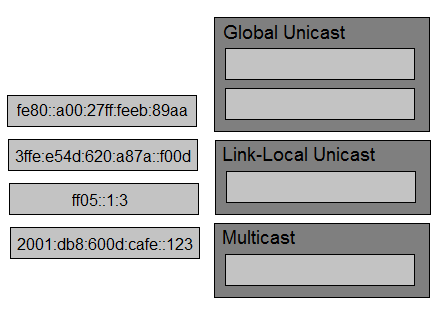
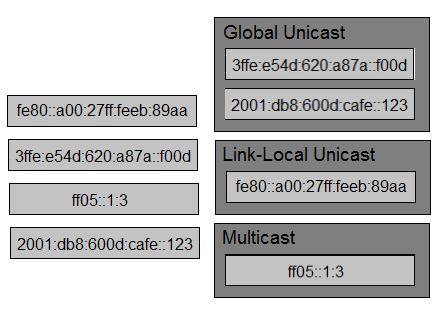
What is an appropriate use for private IPv4 addressing?
D